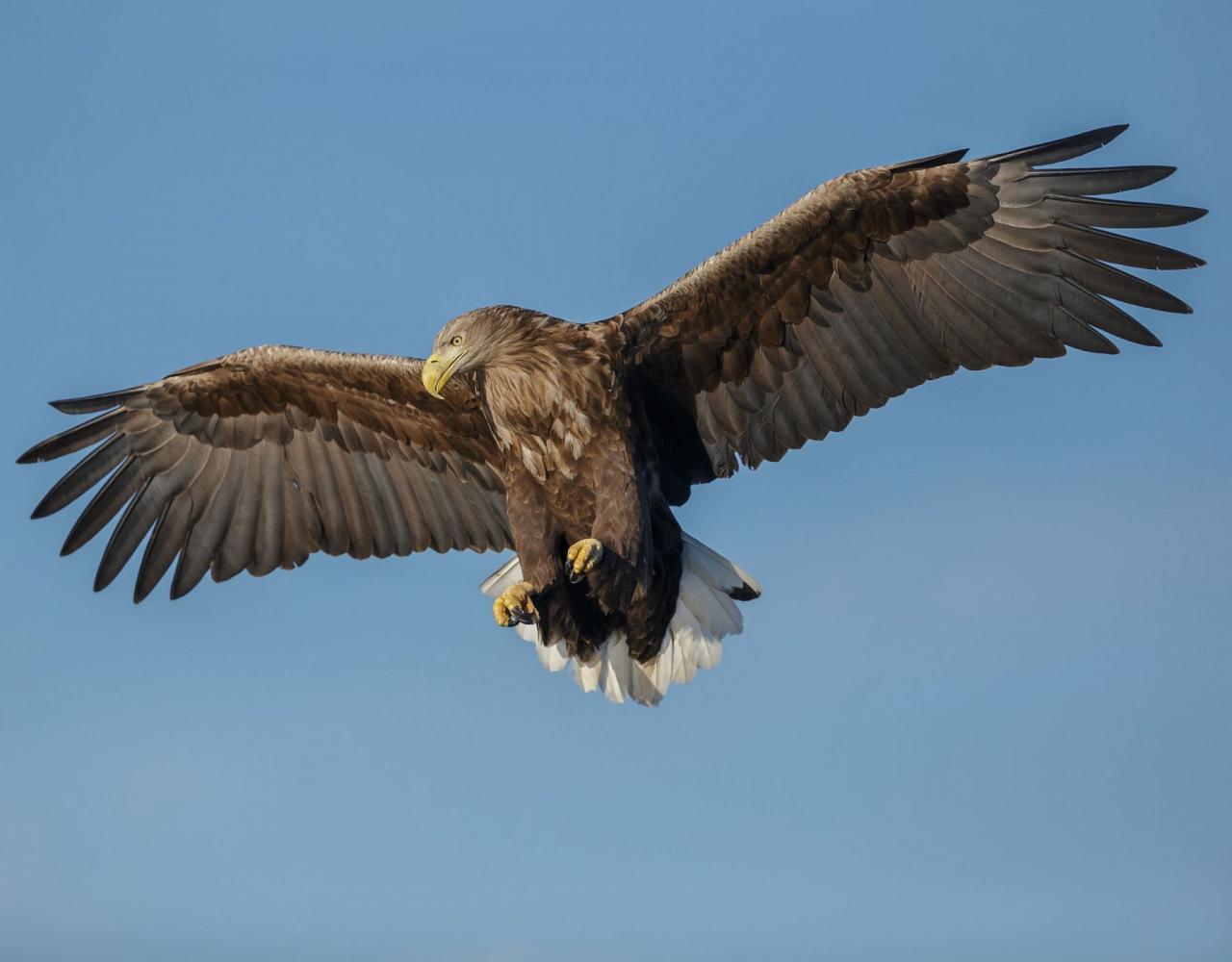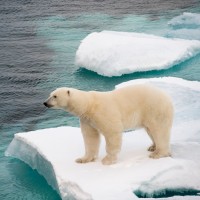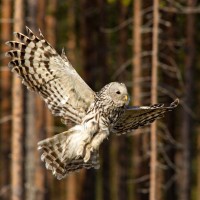- Overview
- Full Itinerary
- Photo Gallery
- Costing
- Ship Information
- Trip Reports
- Map
- Know Before You Go
- Other Trips You May Like
The East Greenland – Scoresby Sund cruise crosses the Arctic Circle into the home waters of multiple species of whale. The expedition will spot huge icebergs as it journeys into the largest and deepest fjord system in the world. Along the way the Northern Lights is guiding our way.
Long hikes are for groups of passengers, accompanied by two armed expedition staff and a Zodiac that will sail ahead to watch for polar bears along the shoreline. Passengers who join this activity should have the willingness and ability to walk at least 15 km (9 miles) in semi-rough terrain that includes shorelines, tundra, low hills, and river crossings. Walks will take around six hours from start to finish, rest times included. We will walk at a modest pace and not cross any alpine terrain. Passengers who do not take part in long walks will have a landing in the morning at the start point of the walk, then sail to the end point of the walk for their second landing in the afternoon.






Trip Itinerary
Itineraries are guidelines; variations in itinerary may occur to account for weather, road conditions, closures, etc. and to maximize your experience.
Day 1: On the Iceland road
Your journey begins in the morning, where by request you can transfer via chartered bus (T) from bus stop Harpa Concert Hall and Conference Centre at Austurbakki, Reykjavik (the meeting point) to the ship in Akureyri (the embarkation point). You arrive in the afternoon after a six-hour drive through northern Iceland.
PLEASE NOTE: This transfer (T) must be booked and paid for in advance. In the early evening, the ship departs from the port of Akureyri, sailing north toward the Denmark Strait.
Day 2: Sailing to east Greenland
While sailing north you’re likely to see fulmars, kittiwakes, gannets, and common guillemots. You then cross the Arctic Circle, possibly spotting whales. By evening, the first icebergs flash into sight with your approach to the east Greenland coast, near Brewster.
Day 3: Arriving at Earth’s largest fjord
Today you reach Scoresby Sund, sailing along the glaciated Volquart Boons Kyst. You may also enjoy a Zodiac cruise past one of the glacier fronts, along with a visit to the basalt columns and ice formations of Vikingebugt.
In the afternoon, we plan to sail by the east coast of Milne Land among a multitude of giant icebergs. If we can also land at Charcot Havn, we will make a walk to the Charcot Glacier. We will then continue by Bjørneør and sail into Øfjord.
Day 4: Colors of the cape
The goal is a Zodiac cruise near Sorte Ø, surrounded by icebergs. Their austere blue-white contrasts sharply with the sediment slopes nearby. The afternoon plan is to sail through the northern parts of Røde Fjord and into Harefjord, with the chance to see musk oxen and warm autumnal foliage.
Day 5: Enormous bergs, Arctic hares
In the morning you encounter colossal icebergs, some over 100 meters (328 feet) high and more than a kilometer (.62 mile) long. Most of them are grounded, as the fjord is only about 400 meters deep (1,312 feet). You then land near Sydkap, with fine views of Hall Bredning and a good shot of seeing Arctic hares.
Today’s long walk goes from Sydkap to Nordøstbugt (12 km, 7.5 miles to the northeast), where the river coming from Holger Danskes Briller flows into the sea. We plan to walk south along the shore to Satakajik, seeing whale vertebrae and the remains of Thule summer houses. Passengers who opt out of the long walking group will join us at this location for their second excursion of the day.
Day 6: Settlement at Scoresby Sund
Today you make a tundra landing on Liverpool Land, in Hurry Inlet. The afternoon stop is Ittoqqortoormiit, the largest settlement in Scoresby Sund at about five hundred inhabitants. At the post office you can buy stamps for your postcards, or just stroll around to see the sled dogs and drying skins of seals and musk oxen. In the afternoon you sail south, passing the picturesque landscapes of the Blosseville Coast.
Day 7: Stewart Ø
The island of Stewart Ø is an important hunting station for the people of Scoresby Sund and also a good area to spot polar bears, narwals, and the beautiful remains of Thule houses.
Day 8: Remote shores
Turner Sound and Rømer Fjord grant you the opportunity to sail far inland, as they have no glacier front at the head and are not clogged with ice. In this location, you may get the opportunity to spot narwhals.
Day 9: Sea life under the northern lights
A sea day grants you the opportunity to spot whales and seabirds – and at night, the magical northern lights.
Day 10: Journey’s end at Akureyri
Every adventure, no matter how grand, must eventually come to an end. You disembark in Akureyri, where on request you can transfer (T) by chartered bus (a six-hour drive that you must book in advance) to the bus stop Harpa Concert Hall and Conference Centre at Austurbakki, Reykjavík, taking home memories that will accompany you wherever your next adventure lies.
Cost of the Journey
Please note: Cruise payments are subject to the terms and conditions of the cruise company, Oceanwide Expedititions.
Pricing is per person, by cabin type.
Quad Porthole: $5650 pp
Triple Porthole: $7000 pp
Twin Porthole: $8200 pp DBL / $13,940 pp SGL
Twin Window: $8850 pp DBL / $15,045 pp SGL
Twin Deluxe: $9500 pp DBL / $16,150 pp SGL
Higher level cabins are available. Please ask for pricing details.
This is a courtesy post for our partners at Oceanwide Expeditions.
Ship Information
MV Hondius is the world’s first-registered Polar Class 6 cruise vessel, built to the highest ice-strengthened standards and surpassing the IMO’s Polar Code requirements. Designed for advanced polar exploration, Hondius offers flexible itineraries, swift ship-to-shore operations, and maximum immersion in the Arctic and Antarctic landscapes.
This modern, environmentally responsible ship minimizes its footprint through LED lighting, steam heating, biodegradable materials, and energy-efficient systems. Accommodating up to 170 guests, Hondius features a range of comfortable cabins and suites, along with a spacious observation lounge and dedicated lecture room for workshops and presentations.
Two gangways, a sheltered Zodiac boarding area, and a fleet of rigid-hull inflatable boats ensure safe and quick access to shore. With a cruising speed of up to 15 knots and a dedicated staff of 70, Hondius blends expedition capability with hotel-level comfort, making it an ideal platform for polar discovery.
Ship Photos
Browse below for trip reports and species lists from past versions of this and other tours from this destination.
Iceland
- June 2021
- June 2022
- June 2023
- June 2024
Pace & Protocols +
Photo credits: Banners: Whale Tail (Andre Gallant), Arctic Safari Group on Zodiacs (Andre Gallant), King Eider (NJ Stock), Sisimiut Village (NJ Stock) Thumbnails: Arctic Hare, Arctic Tern (NJ Stock), Ivory Gull (NJ Stock), Razorbill (NJ Stock), Beluga Whale (NJ Stock), Red-necked Phalarope (NJ Stock), Gyrfalcon (NJ Stock)























